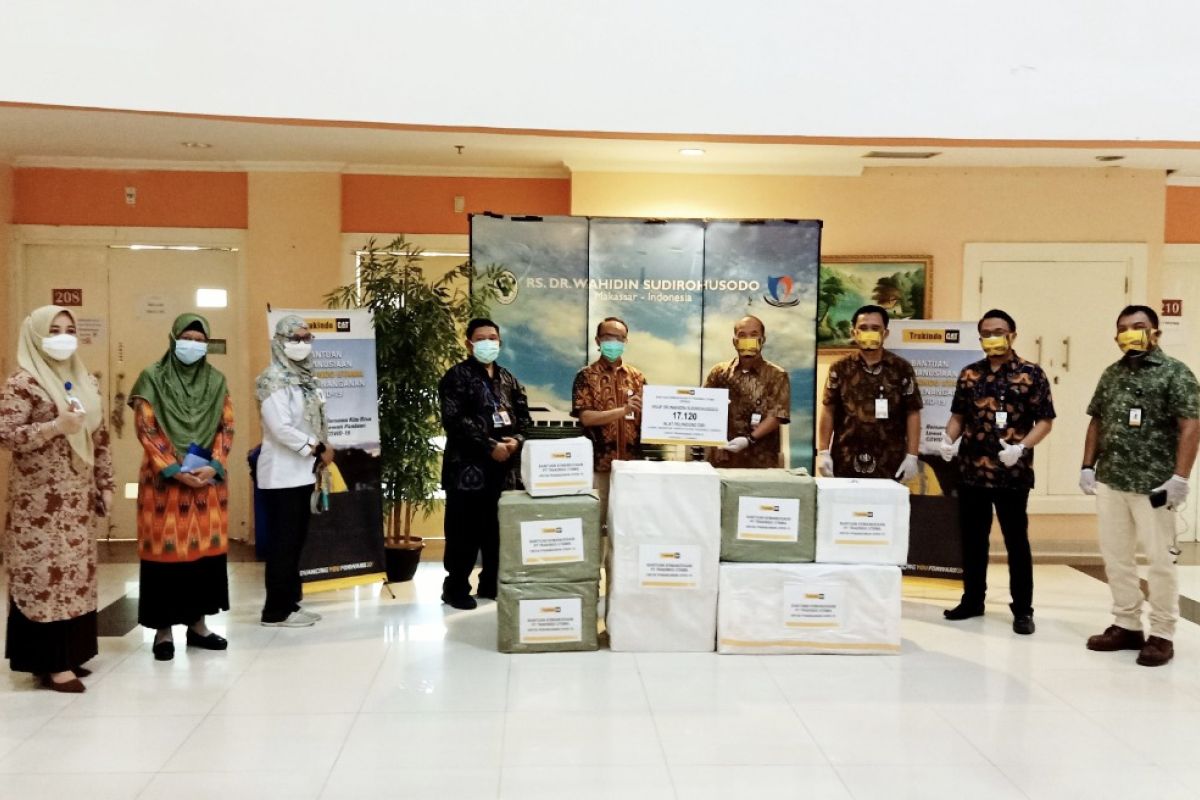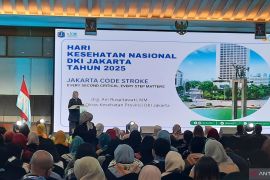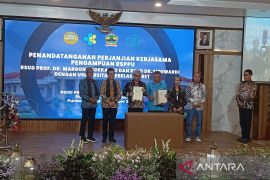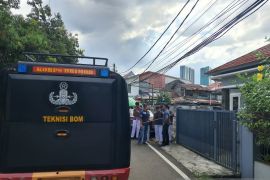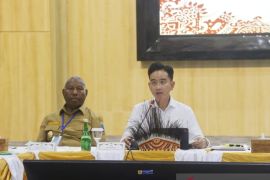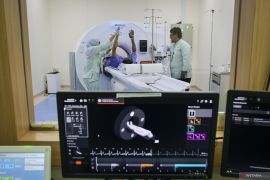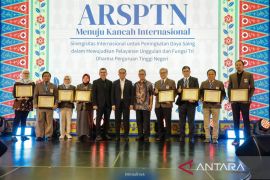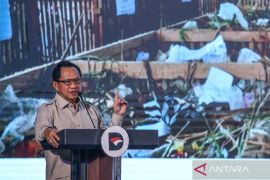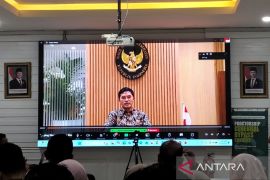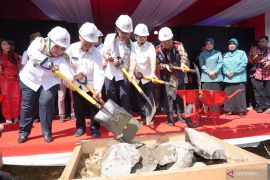This has been evidenced by hospitals emerging as the largest COVID-19 clusters amid the ongoing pandemic.
Therefore, children and pregnant women have been strongly advised against visiting hospitals if they are not sick. Many hospitals have even barred entry to children.
Not just visitors, but healthcare workers, including doctors and nurses, and cleaners risk exposure to disease while working at hospitals, particularly in the current pandemic.
In Manokwari, West Papua, about 38 healthcare workers have contracted COVID-19 as of September 22, 2020, prompting the closure of several public health facilities to break the chain of virus transmission.
Of the 38 healthcare workers, 26 worked at hospitals and 12 at community health centers (Puskesmas), Henri Sembiring, head of the Manokwari Task Force for COVID-19 Response, stated recently.
The Manokwari authorities have closed three Puskesmas -- Pasir Putih, Sanggeng, and Maripi -- as well as the surgery room at the Manokwari Regional Hospital after healthcare workers contracted COVID-19.
Similar reports have come in from several regions across Indonesia. Since the country announced its first two COVID-19 cases on March 2, 2020, at least 117 doctors and 70 nurses have succumbed to the deadly virus.
According to data provided by the Task Force for COVID-19 Response on September 26, 2020, Indonesia has recorded 4,494 fresh cases in the last 24 hours, bringing the total caseload to 271,339. With 90 more people succumbing to the disease, the death toll has reached 10,308.
In a positive development, as many as 3,207 COVID-19 patients have recovered in the last 24 hours, bringing the total number of recoveries to 199,403.
Jakarta has recorded the highest number of new cases at 1,322 and the highest number of recoveries at 764, followed by West Java, which has reported 386 fresh cases and 622 recoveries, while East Java has seen 279 fresh cases and 338 patients recovering in the last 24 hours.
Earlier, the Task Force had noted that hospitals had emerged as the largest contributors of confirmed coronavirus cases.
“During the period from June 4 to September 12, 2020, clusters arose mostly from hospitals, communities, and offices, with the maximum number of COVID-19 cases (contributed by them). There are 24 thousand patients infected at hospitals in Jakarta," Wiku Adisasmito, spokesperson for the task force, said on September 22 2020.
Dr. Dewi Nur Aisyah, head of the task force's data and information technology section, has also confirmed that in Jakarta, 63.46 percent of the total cases have originated from patients visiting hospitals.
The second largest cluster in Jakarta has been the cluster of patients in the community, who have accounted for 15,133 cases, or 39.36 percent of the total COVID-19 cases in the capital city.
“So, if one person tests positive, it should be traced who he has made contact with so far. The family cluster is included in this category," she said.
Meanwhile, the third cluster that has contributed the highest number of COVID-19 cases in Jakarta is the office cluster.
“Offices are in the third rank of the highest distribution sources, with a total of 3,194 cases, or about 8.31 percent of the total cases in Jakarta,” Dr. Dewi informed.
Other clusters that have contributed to COVID-19 cases in Jakarta include ship crew members or Indonesian migrant workers, who have accounted for as many as 1,641 or 4.27 percent of cases; employees working at home, who have accounted for 665 or 1.73 percent of cases; markets, which have accounted for 622 or 1.62 percent of cases; and Puskesmas (community health center) staff, who have contributed 220 or 0.57 percent of cases.
Other clusters include dormitory clusters, which have accounted for as many as 118 or 0.31 percent of the total cases; religious activities (104 or 0.27 percent of cases); prisons (63 or 0.16 percent of cases); orphanages (36 or 0.09 percent of cases); marriage activities (35 or 0.07 percent of cases); schools (19 or 0.05 percent of cases); refugee camps (six or 0.02 percent of cases); night amusement centers (five cases); Islamic boarding schools (four or 0.01 percent of cases); and, hotels (three or 0.01 percent of the total cases).
Amid a mounting number of healthcare workers succumbing to the novel coronavirus disease, President Joko Widodo (Jokowi) has instructed Health Minister Terawan Agus Putranto to audit security and health protocols at hospitals.
Auditing health protocols for patients and healthcare workers is necessary to ensure that hospitals become secure places rather than emerging as new clusters of COVID-19 transmission, he noted while chairing a limited cabinet meeting held via video teleconference at the Merdeka Palace, recently.
The President also urged the minister to ensure sufficient capacity of beds and intensive care units (ICUs) at referral hospitals.
Chief of the mitigation team of the Indonesian Medical Association (IDI), Dr. Adib Khumaidi, has noted that doctors exposed to the virus while treating COVID-19 patients and taking medical action on patients were later found to have contracted COVID-19.
In addition, they likely contracted the virus through non-medical services, such as close contact with family members and other people, he pointed out.
The IDI, on its part, plans to analyze COVID-19 transmission patterns in medical workers.
"It is important for us to take a step to protect and rescue healthcare workers," Khumaidi, concurrently the vice chairman of the IDI central executive board, noted.
This may refer to the potential risk of exposure to COVID-19 while serving patients or socializing in the community, including the possibility of them having comorbidities, he noted.
As per a preliminary analysis, in general, medical workers have died of COVID-19 not merely because of poor personal protective equipment, he informed. The problem is also connected to the standardization of the service system and regulations in the wake of the COVID-19 pandemic, he noted.
Another factor has been the workload of doctors or medical workers serving COVID-19 patients, he added.
"This is also related to working hours and rest. On our part, we must make a good regulation to control their working hours," he remarked.
During the COVID-19 pandemic, hospitals should not add to the workload of medical workers, but rather control the workload, he said.
IDI will calculate the capability of human resources to find the best solution, he added.
Hospitals, in fact, are not as safe as many people thought, particularly during the ongoing COVID-19 pandemic.
Hence, people have been advised to avoid going to the hospital, except in case of emergency, besides strengthening their immunity and maintaining their health by consuming nutritious food and taking multivitamins. (INE)
Related news: Hospital clusters contributing most COVID-19 cases: task force
Related news: New COVID-19 clusters arising in refugee shelters: Epidemiologist
EDITED BY INE
Editor: Suharto
Copyright © ANTARA 2020
